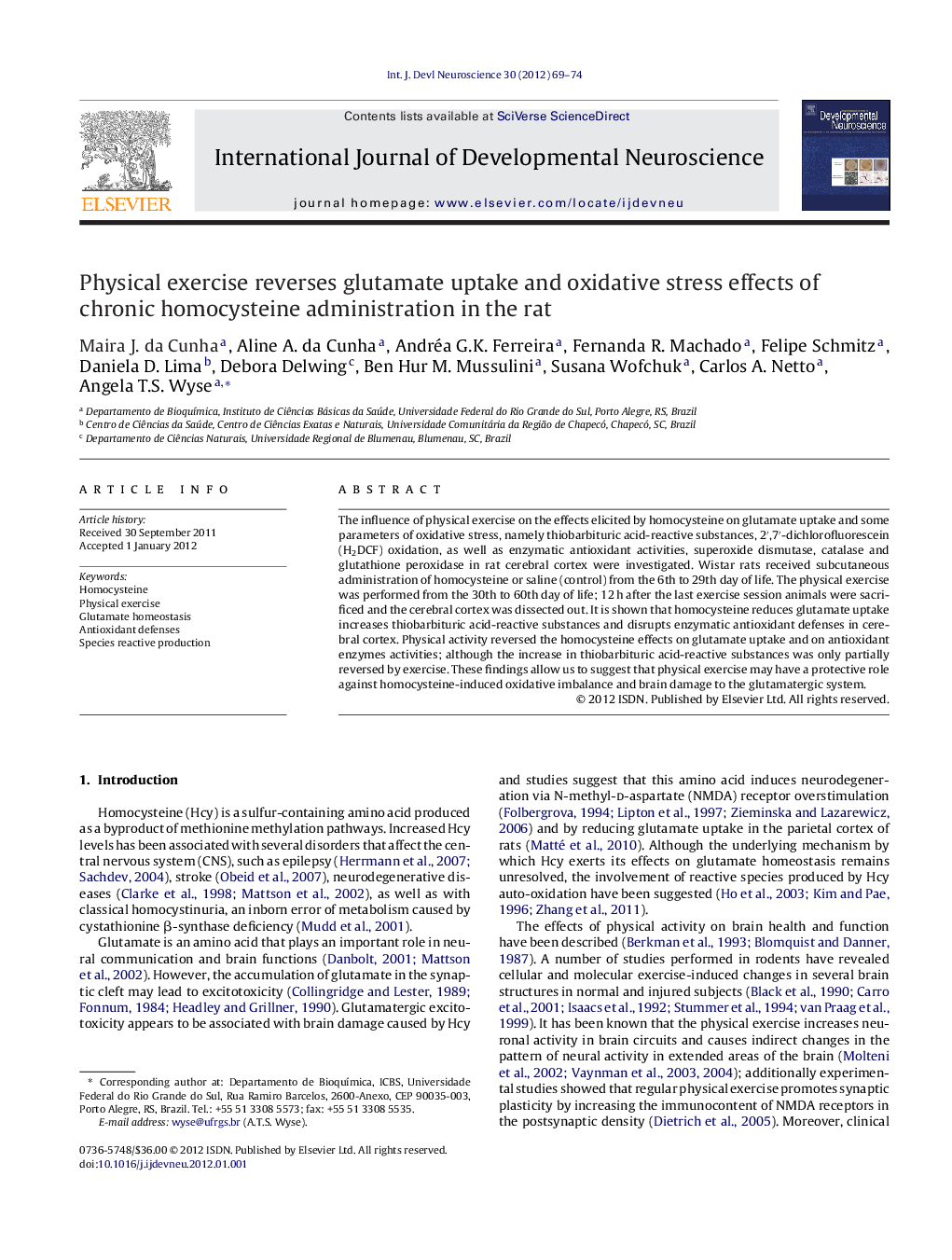| Article ID | Journal | Published Year | Pages | File Type |
|---|---|---|---|---|
| 2786277 | International Journal of Developmental Neuroscience | 2012 | 6 Pages |
The influence of physical exercise on the effects elicited by homocysteine on glutamate uptake and some parameters of oxidative stress, namely thiobarbituric acid-reactive substances, 2′,7′-dichlorofluorescein (H2DCF) oxidation, as well as enzymatic antioxidant activities, superoxide dismutase, catalase and glutathione peroxidase in rat cerebral cortex were investigated. Wistar rats received subcutaneous administration of homocysteine or saline (control) from the 6th to 29th day of life. The physical exercise was performed from the 30th to 60th day of life; 12 h after the last exercise session animals were sacrificed and the cerebral cortex was dissected out. It is shown that homocysteine reduces glutamate uptake increases thiobarbituric acid-reactive substances and disrupts enzymatic antioxidant defenses in cerebral cortex. Physical activity reversed the homocysteine effects on glutamate uptake and on antioxidant enzymes activities; although the increase in thiobarbituric acid-reactive substances was only partially reversed by exercise. These findings allow us to suggest that physical exercise may have a protective role against homocysteine-induced oxidative imbalance and brain damage to the glutamatergic system.
► Chronic hyperhomocysteinemia reduces glutamate uptake in cerebral cortex of rats 30 days after last injection. ► Rats subjected to chronic hyperhomocysteinemia present an induction of oxidative stress in cerebral cortex 30 days after last injection. ► Physical exercise reversed effect caused by chronic hyperhomocysteinemia.
